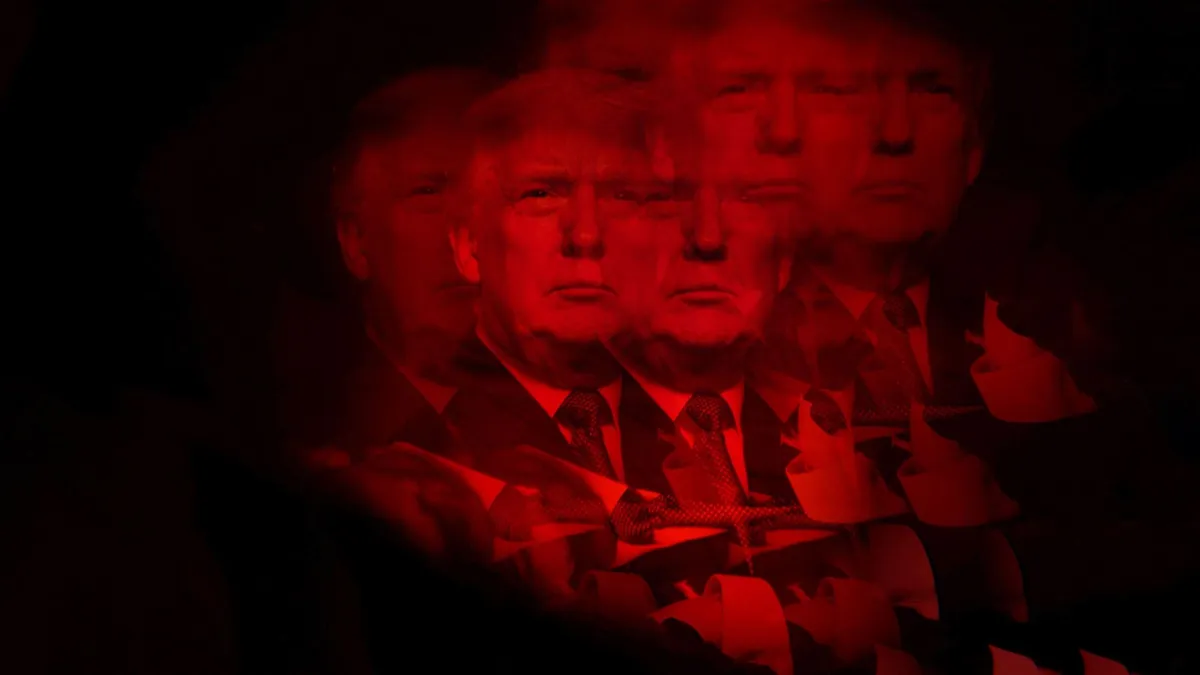
Tariffs may appear to be straightforward economic tools, but their consequences can be complex and far-reaching. This has become evident in the case of former President Donald Trump, whose fortune recently plummeted by a staggering half a billion dollars within just a few days. As Trump initiated a global trade war last week, the ramifications were felt across various segments of his financial portfolio, including his own assets.
On April 2, the day Trump unveiled his ambitious plan for sweeping tariffs, Forbes estimated his net worth at approximately $4.7 billion. However, less than a week later, that figure dropped to an estimated $4.2 billion as the value of his public stocks and private holdings declined alongside the broader market. The most significant loss for Trump stemmed from his most valuable asset, the Trump Media and Technology Group, which saw an 8% decrease in value over the last three trading days, reaching its lowest price since October. His stake, initially valued at $2.2 billion, has now dwindled to $2 billion—a loss of roughly $170 million that may only be the tip of the iceberg.
Trump's commercial real estate investments have also suffered, with an estimated $90 million reduction in value, assuming they experienced similar declines as publicly traded commercial property companies. Shares of Vornado Realty Trust, a firm that partners with Trump on two of his most lucrative properties—1290 Avenue of the Americas in New York and 555 California Street in San Francisco—dropped 14% since Trump’s tariff announcement. Another major player in New York City real estate, SL Green, saw its stock fall 15%. Consequently, Trump's portfolio, which includes properties like Trump Tower and 40 Wall Street, is now estimated to be worth around $570 million, down from $660 million just a week prior.
Even Trump’s golf properties are facing devaluation, particularly as many of the products sold in pro shops, including golf balls and apparel, are sourced from overseas. The real peril for Trump's portfolio lies in potential belt-tightening among club members, who might reconsider their spending on extravagant dining, weddings, and even club memberships during economic downturns. An industry insider noted, “If you hit a recession, your wife looks over at you and says, ‘What the heck are we doing with this expensive club membership?’”
Although there are no publicly traded companies that mirror Trump’s collection of golf clubs, similar leisure businesses, such as Vail Resorts and Soho House, have dropped over 15% since the tariff announcement. Topgolf Callaway Brands, which manufactures golf clubs, also suffered a 15% decline. Should Trump’s golf courses experience a similar downturn, it could cost him another $70 million in net worth.
Trump’s hospitality assets are not faring any better. His largest property, Trump National Doral, a 643-room resort in Miami, recently hosted a LIV Golf event, attended by Trump shortly after announcing his tariff plans. Despite a spokesperson claiming that Trump remains focused on national interests rather than his business, the financial reality suggests otherwise. Trump continues to own hundreds of hotel-condo units in Chicago and Las Vegas, and if the value of these holdings were to drop by 16%, it could result in an additional $65 million loss. Additionally, his licensing-and-management business may have lost another $15 million.
The residential real estate market has also seen significant declines, with shares of publicly traded apartment holders down an average of 13%. Trump owns numerous units in buildings he developed in the past, and trimming that portfolio could lead to another $20 million decrease in his net worth. While his most prized assets, like the penthouse atop Trump Tower and Mar-a-Lago, might be somewhat insulated, a conservative estimate suggests that even a 5% decline in these assets could cost him an additional $32 million.
Cash is typically a safe haven during volatile times. Trump's latest financial disclosure reveals a portfolio of diversified bonds and various equity positions, including a stake in the private-credit firm Blue Owl Capital, which has fallen 22% since the tariff announcement. Following his August disclosure, Trump received substantial windfalls from cryptocurrency ventures, notably $400 million from World Liberty Financial and approximately $175 million from sales of the $TRUMP coin. However, the volatility of cryptocurrencies poses a risk; for instance, Ether has dropped 45% since February, including an 18% decline following the tariff announcement. If Trump's estimated post-tax windfall of $350 million were to drop by half as much as Ether, that would mean another $32 million loss.
When evaluating Trump's financial situation, it becomes clear that losses from privately held assets may surpass those from publicly traded stocks. The most significant threat to Trump’s financial health is not necessarily the direct impact of the tariffs on imported goods, as his businesses do not rely heavily on physical products. Instead, the erosion of investor confidence worldwide poses a greater risk. Investors often make decisions based on emotions rather than logic, especially in sectors such as luxury real estate, expensive club memberships, and high-value stocks. The uncertainty created by Trump's policies and actions could lead to further declines in his net worth.